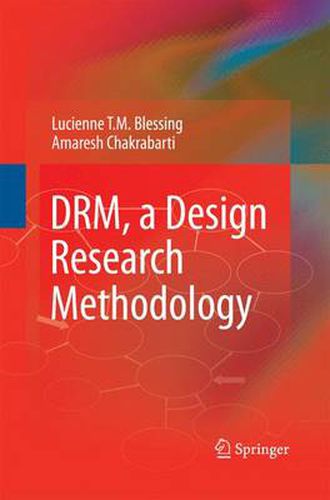Readings Newsletter
Become a Readings Member to make your shopping experience even easier.
Sign in or sign up for free!
You’re not far away from qualifying for FREE standard shipping within Australia
You’ve qualified for FREE standard shipping within Australia
The cart is loading…






This title is printed to order. This book may have been self-published. If so, we cannot guarantee the quality of the content. In the main most books will have gone through the editing process however some may not. We therefore suggest that you be aware of this before ordering this book. If in doubt check either the author or publisher’s details as we are unable to accept any returns unless they are faulty. Please contact us if you have any questions.
The initial motivator for the development of DRM, a Design Research Methodology, and the subsequent writing of this book was our frustration about the lack of a common terminology, benchmarked research methods, and above all, a common research methodology in design. A shared view of the goals and framework for doing design research was missing. Design is a multidisciplinary activity occurring in multiple application areas and involving multiple stakeholders. As a consequence, design research emerges in a variety of disciplines for a variety of applications with a variety of subjects. This makes it particularly difficult to review its literature, relate various pieces of work, find common ground, and validate and share results that are so essential for sustained progress in a research community. Above all, design research needs to be successful not only in an academic sense, but also in a practical sense. How could we help the community develop knowledge that is both academically and practically worthwhile? Each of us had our individual ideas of how this situation could be improved. Lucienne Blessing, while finishing her thesis that involved studying and improving the design process, developed valuable insights about the importance and relationship of empirical studies in developing and evaluating these improvements. Amaresh Chakrabarti, while finishing his thesis on developing and evaluating computational tools for improving products, had developed valuable insights about integrating and improving the processes of building and evaluating tools.
$9.00 standard shipping within Australia
FREE standard shipping within Australia for orders over $100.00
Express & International shipping calculated at checkout
This title is printed to order. This book may have been self-published. If so, we cannot guarantee the quality of the content. In the main most books will have gone through the editing process however some may not. We therefore suggest that you be aware of this before ordering this book. If in doubt check either the author or publisher’s details as we are unable to accept any returns unless they are faulty. Please contact us if you have any questions.
The initial motivator for the development of DRM, a Design Research Methodology, and the subsequent writing of this book was our frustration about the lack of a common terminology, benchmarked research methods, and above all, a common research methodology in design. A shared view of the goals and framework for doing design research was missing. Design is a multidisciplinary activity occurring in multiple application areas and involving multiple stakeholders. As a consequence, design research emerges in a variety of disciplines for a variety of applications with a variety of subjects. This makes it particularly difficult to review its literature, relate various pieces of work, find common ground, and validate and share results that are so essential for sustained progress in a research community. Above all, design research needs to be successful not only in an academic sense, but also in a practical sense. How could we help the community develop knowledge that is both academically and practically worthwhile? Each of us had our individual ideas of how this situation could be improved. Lucienne Blessing, while finishing her thesis that involved studying and improving the design process, developed valuable insights about the importance and relationship of empirical studies in developing and evaluating these improvements. Amaresh Chakrabarti, while finishing his thesis on developing and evaluating computational tools for improving products, had developed valuable insights about integrating and improving the processes of building and evaluating tools.